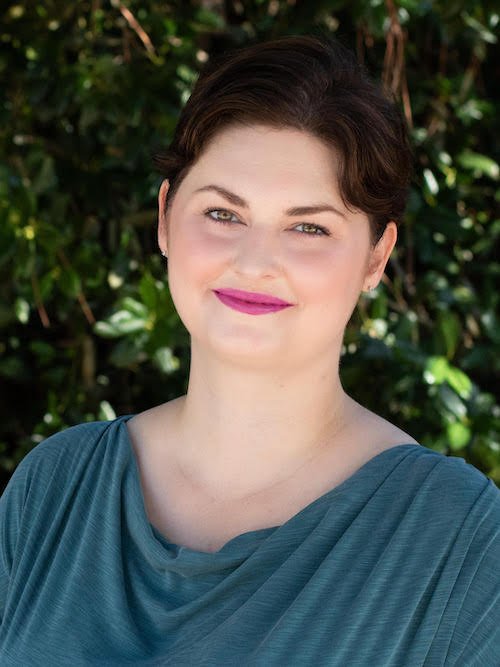
5 Actions I Take to Support My PDA Needs
A look at my experience with PDA and the steps I take care for myself.
written by Cherish Graff, LPC The following is what works for me. While I know it’s not going to be the exact formula for everyone, I’m sharing my strategies as an example of one person's lived experience with PDA.
Because I have hyper-sensitive interoception and can sense my internal body signals, as well as emotional and mood shifts, I am able to recognize internal cues for capacity and know when I am able to handle more demands or loss of autonomy.
I have had years to work on my internalized ableism where I focused on recognizing when my inner critic is belittling me and being able to combat it's lies from neuronormative culture. Even so, it took over a year to actively shift my thinking around how I operate with better understanding of PDA. It has helped in a way nothing else has. The biggest shift has been recognizing the nervous system dysregulation, specifically around internal and external needs, demands, expectations, and loss of autonomy.
Aside from a total paradigm shift in conceptualizing my experience, here are actions I take to support my PDA:
1. Mindfulness Check-ins
I experience distress with every internal or external demand as well as every time I am not consulted, not given a choice or not able to make my own decisions. I use mindfulness tools to check in with myself. This is how I know if I need to use any of the other skills to help myself regulate or accommodate myself in other ways (such as practicing lessening demands in the short term).
2. Incorporating Low(er) Demand Living
Low(er) Demand Living is different for everyone.
The way I practice is by:
• Recognizing what needs, expectations, demands and loss of autonomy activate my nervous system the most (to be able to decrease each, when I can).
•Setting boundaries with myself based on this knowledge. An example: if I just unloaded the dishwasher, I need to take a break before trying any other household tasks because I will wear myself down and not be able to do anything else later. It can feel ridiculous to take a break, especially when I feel like I can do more. But I know better and it works best when I try to maintain some capacity.
• Checking in with my capacity throughout the day to inform which boundaries I need in any given moment.
• Refusing to do what's not necessary (safety and basic needs notwithstanding). An example: If I know I need to do the laundry today but I am really not able to start a load right now, I don’t. I wait and check in to figure out if I can do it later, or not. Some things are essential, and I have more pressure to do these. I am not living a life of leisure. It is simply moving away from shame, guilt, and “pushing through,” and instead honoring and conserving.
3. Requesting Accommodation
I have to tell the people around me what my needs are when I recognize them in order to conserve my capacity. Examples of the language I use are:
"I don't have the capacity for that right now."
"I can't handle that right now."
"I can't do that right now."
“Yes, but only if we do it this way."
I communicate this verbally or in writing, depending on my ability in the moment.
4. Leaning on Learned Coping Skills
With PDA, I have to recognize my stress responses differently than I do with CPTSD, anxiety/panic, OCD, or something else. Once I detect nervous system dysregulation, I identify the cause then use what I call a “progressive coping plan” where I list the skills I respond to.
Some of the skills I use are:
5 Senses
TIPP skills from DBT
Check the Facts from DBT
Intrusive Thought Technique ACT
5. Continuing to Learn and Adapt
When a new situation activates my nervous system, or I react to something in an unexpected way, I work through my distress then take note of what happened. This helps me recognize clues sooner so that I may be able to prevent distress and dysregulation the next time. When I cannot prevent nervous system activation, I use a progressive coping plan to cope the best I can within the dysregulated state.
I also communicate any findings to the person who may have been involved in what activated my nervous system, so we both understand what's needed going forward and can repair a rupture, if needed.
I also follow and read about PDA every day. If something is written about PDA in children, or for parents, I recognize that I can learn from it and use it in my life. Nervous systems are nervous systems. There’s more information out there for children and parents. Adapting that information for my own life has helped me to better understand my own PDA needs and how to care for myself.
cherish graff
Cherish Graff, LPC (she/they) is a disabled, multiply neurodivergent, gender-fluid and pan therapist living and practicing in Texas. Cherish has been a therapist working with Neurodivergent folks for over a decade and is the owner and therapist at Neuro Clarity Counseling, LLC as well as the owner and consultant at Neuro Affirming Consulting, LLC. Cherish also runs the Instagram account AuDHD_Therapist in an effort to educate on Neurodivergent Affirming practices, especially for Autistic folks.
Want to share your work? Submissions are open!



